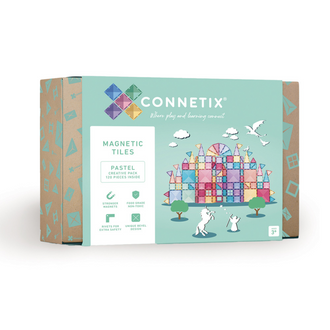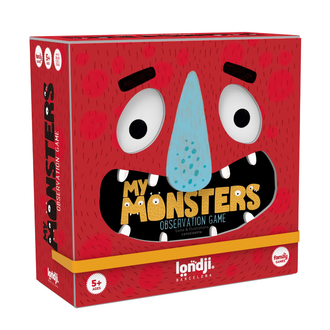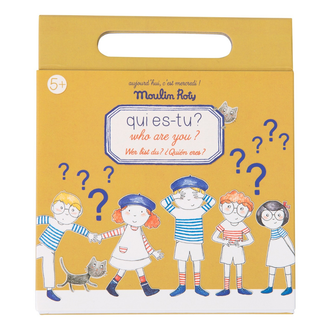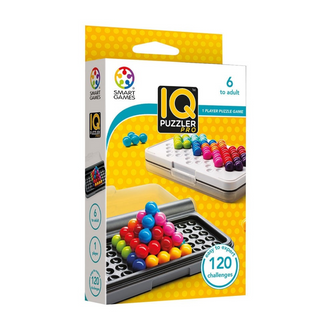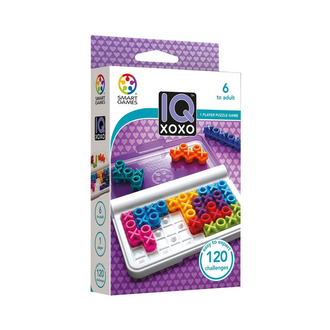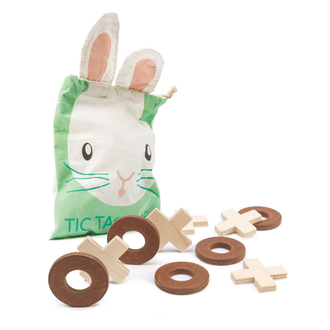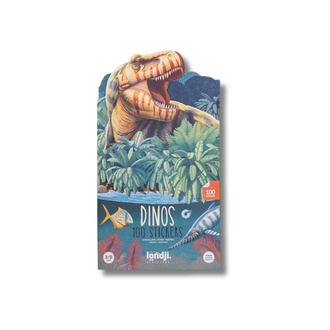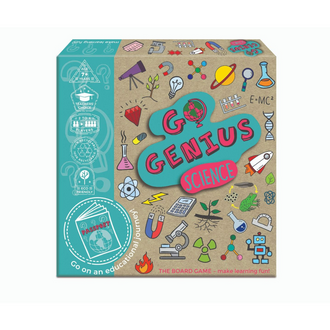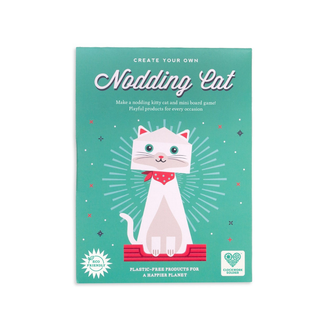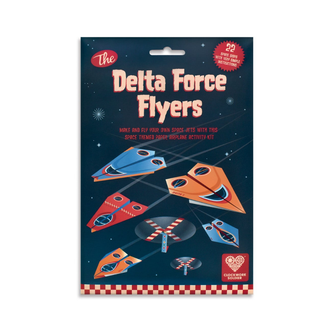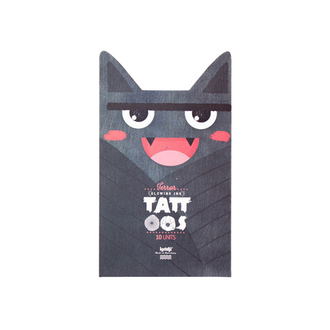Why Sensory Toys Are Essential for Baby Development
From the moment they’re born, babies are constantly learning through their senses. The feel of a soft blanket, the sound of a familiar voice, and the sight of a colourful mobile all help shape how they perceive the world. But as parents, how can we encourage this natural curiosity in a way that promotes healthy development? That’s where sensory toys come in. These specially designed toys engage a baby’s senses—touch, sight, sound—and contribute to their overall cognitive, motor, and emotional growth.
Incorporating sensory play during early development is crucial. Sensory toys like soft rattles or textured teethers offer babies new ways to explore and understand their environment. For example, a baby playing with a sensory bottle not only learns about cause and effect but also develops essential fine motor skills by shaking and grasping. These activities may seem small, but they play a significant role in building the foundation for more advanced skills like problem-solving and coordination.
Moreover, sensory toys can have a soothing effect, helping babies regulate their emotions. The gentle jingle of a rattle or the crinkle of a soft toy can provide comfort in new or overwhelming situations. By offering a variety of sensory experiences, parents can support their child’s development in a fun and engaging way. In this guide, we’ll explore the importance of sensory play and highlight some of the best toys for baby development, like our Sensory Bottle Sound Rabbit and Sensory Bottle Move Ducky, designed to stimulate your little one’s curiosity while aiding their growth.

What Are Sensory Toys and How Do They Support Development?
Sensory toys help babies explore and learn about their world through sight, sound, touch, and sometimes even taste and smell. Designed to engage their developing senses, these toys offer babies meaningful ways to grow. For instance, a soft rattle or a textured teething toy might seem simple, but for a baby, it’s a whole new way of discovering how things work.
One of the key benefits of sensory toys is that they promote cognitive development. When a baby interacts with a toy, they begin to understand the basic cause and effect: “If I shake this, it moves.” It’s a foundational skill that will carry over into more complex learning as they grow. A toy as simple as a Sensory Bottle Sound Rabbit, filled with colourful beads or a fun figure, can ignite a child’s curiosity. As they observe how the objects move inside when they shake the bottle, their brains are busy processing new information about movement and gravity.
Sensory toys also help enhance motor skills. Babies grasp, shake, and reach for toys, which helps strengthen the muscles in their hands and improve their coordination. Think about a toy that has multiple textures — as babies feel the different surfaces, they’re using their hands in new ways and improving their dexterity. This practice is crucial as they begin to master fine motor tasks like holding a spoon or picking up small objects.
Sensory toys also play a role in emotional development. Certain textures can be soothing for babies, helping them manage stress or settle down when they feel overwhelmed. This is particularly important during the early stages of emotional regulation. Toys like the Sensory Bottle Move Ducky, which gently moves when shaken, might become a comforting object for babies during moments of unease, teaching them how to self-soothe.
Incorporating sensory toys into daily playtime can be a simple yet effective way to support your baby’s development. By offering them varied textures, sounds, and visuals, you’re helping to lay the foundation for important developmental milestones that will shape their cognitive and motor skills for years to come.

Best Sensory Toys for Touch and Tactile Exploration
When babies begin exploring the world around them, touch is one of the most immediate ways they interact with their surroundings. Tactile stimulation—feeling different textures, shapes, and surfaces—is vital for early development, especially for fine motor skills and sensory processing. Babies use their hands (and often their mouths) to investigate objects, and providing toys that offer varied tactile experiences helps them make important connections between what they see and feel. This touch-based learning process is crucial in developing their coordination, grasping ability, and cognitive skills.
Imagine a baby picking up a soft plush toy for the first time. The toy might have a fluffy texture, smooth seams, or even crinkly fabric on its ears. As the baby squeezes, pats, or shakes the toy, they’re not only experiencing new sensations but also practising how to control their movements. This is why tactile toys are so important—they engage babies in hands-on learning while helping them develop essential fine motor skills. For instance, a toy like the Orange Baby Sensory Ball stimulates their sense of touch while encouraging them to practise grasping. Its soft yet bumpy surface provides a safe and engaging way for babies to explore textures, all while strengthening their tiny hands.

One of the greatest benefits of tactile toys is how they encourage babies to experiment with their environment. A textured ball, for instance, helps them understand the concept of grip and release, which will later translate into more refined actions like holding a spoon or picking up small objects. For babies just beginning their tactile exploration journey, soft or plush toys are ideal. They offer comfort and familiarity while still engaging the sense of touch. Soft baby toys with various textures—smooth, fluffy, bumpy—allow babies to compare and contrast different sensations. Through this comparison, they learn to distinguish between different materials, which enhances their cognitive development.
In addition to soft toys, textured balls are excellent for tactile exploration. A toy like the Orange Baby Sensory Ball, with its unique texture and squeezable material, helps babies develop a better sense of grip and control. When babies press and manipulate the ball, they’re learning about pressure and resistance, both essential for improving hand-eye coordination and fine motor skills. The texture also makes it easier for little hands to hold, providing endless opportunities for play and learning.
Another fantastic option for tactile exploration is the Tubbles Sensory Stones collection, which includes sets like Vibrant Veggies, Garden Goodies, and Fantastic Fruits. These sensory stones are designed with different textures and shapes, offering babies a chance to engage in multi-sensory learning. Each stone is shaped like a fruit or vegetable, encouraging babies to explore through touch, sight, and shape recognition. The varied surfaces—from smooth to ridged—stimulate babies’ curiosity, keeping them engaged as they feel their way through different textures.
What makes these toys particularly beneficial is how they align with a baby’s natural desire to explore. Babies are naturally curious and enjoy investigating objects with their hands. The Tubbles Sensory Stones cater to this instinct by offering a rich sensory experience that goes beyond simple play. As babies feel the differences between the bumpy surface of a carrot and the smooth skin of an apple-shaped stone, they’re learning to distinguish between various materials and refining their sense of touch. These early lessons in texture differentiation can set the stage for more complex sensory learning in the future.

Ultimately, tactile sensory toys offer babies a hands-on approach to learning that engages both their minds and bodies. By playing with textured toys, babies are improving their motor skills and gaining a deeper understanding of the world around them. From soft plush toys that provide comfort and engagement to textured sensory balls that challenge their coordination, tactile toys play a crucial role in early childhood development. For parents looking to support their baby’s sensory journey, introducing toys like the Orange Baby Sensory Ball and Tubbles Sensory Stones can make a world of difference. By offering varied textures and shapes, these toys encourage babies to use their sense of touch to explore, learn, and grow—one squeeze, pat, or shake at a time.
Visual and Auditory Sensory Toys: Stimulating the Senses
Visual and auditory sensory toys play a key role in developing a baby’s understanding of their surroundings. From the moment babies open their eyes, they begin to absorb the sights and sounds around them, and their brains work hard to make sense of these new experiences. Toys that encourage visual tracking or sound recognition can sharpen their attention span, ignite curiosity, and deepen their awareness of the world. Introducing new colours, shapes, and sounds through toys is not only entertaining for babies but also crucial for building cognitive skills and sensory awareness.

Consider the first time a baby tracks a moving object with their eyes. This simple act is a major developmental milestone. It requires the coordination of visual and motor skills as the baby focuses on the object and moves their eyes to follow it. Toys that stimulate this kind of engagement—such as moving objects or those that create sound when shaken—can help babies build these connections between sight and movement. For example, a toy like the Move Ducky Sensory Bottle encourages visual tracking with its gentle movement inside the bottle. Babies can follow the floating objects as they move, strengthening their ability to focus and coordinate their eye movements.
Similarly, auditory toys introduce babies to the world of sound, helping them learn to recognise and respond to different noises. These toys are invaluable for developing auditory processing skills—helping babies understand that certain sounds are linked to specific objects or actions. A sensory bottle like the Sound Rabbit Sensory Bottle combines both sight and sound stimulation. When babies shake the bottle, they hear the soft jingling sound and see the objects inside move. This type of multi-sensory engagement not only sparks curiosity but also encourages babies to interact with their environment, making important mental connections between sound and motion.
Babies are naturally drawn to vibrant colours, and toys that incorporate bright hues can also stimulate visual development. Early in life, babies are learning to distinguish between different colours, and toys that offer a range of shades can enhance this ability. Toys with bold contrasts, like black and white or primary colours, are particularly effective for younger babies as they are easier to see and follow. Introducing more complex colour patterns as they grow can help further develop their visual discrimination skills.
For older babies transitioning into toddlerhood, introducing colours through play becomes even more significant as it ties into learning to name and categorise objects. This is where creative toys like the 9 Scented Double-Tip Kids Pens come in. While these pens are designed for artistic play, they also serve as an excellent sensory tool by stimulating both visual and olfactory senses. Each pen is vibrant and scented, offering a multi-sensory experience that goes beyond just drawing. As toddlers use the pens to create colourful shapes and pictures, they engage their sense of sight and smell in a way that fosters creativity and sensory development simultaneously. Additionally, handling the pens helps them practise their fine motor skills, preparing them for more detailed tasks like writing and drawing.

What makes visual and auditory sensory toys so valuable is their ability to captivate a baby’s attention and encourage active engagement. Babies are curious by nature, and toys that stimulate their sense of sight and sound provide an outlet for that curiosity. Whether through the gentle sounds of a sensory bottle or the vibrant colours of scented pens, these toys give babies the opportunity to explore their environment in new and exciting ways. By engaging multiple senses at once, they also promote cognitive development by helping babies process different types of stimuli and connect them with real-world experiences.
Another important aspect of auditory toys is that they help babies understand cause and effect. For instance, when a baby shakes the Sound Rabbit Sensory Bottle, they immediately hear the jingle sound inside. This teaches them that their actions can produce a reaction, reinforcing early cognitive skills and enhancing their problem-solving abilities. The same goes for toys like rattles or musical instruments designed for babies. These toys encourage interaction, allowing babies to experiment with sound and discover how their movements can create different noises.
Ultimately, introducing visual and auditory sensory toys into a baby’s playtime routine is a fun and effective way to stimulate their senses and support their overall development. From sensory bottles like Move Ducky to creative tools like the Scented Double-Tip Pens, these toys offer a variety of ways for babies to engage their sight, sound, and even smell. As they grow, these early sensory experiences will help form the foundation for more complex cognitive and motor skills, setting them up for continued exploration and learning.
Top Baby Teething Toys: Soothing and Sensory Play Combined
Teething can be a challenging time for both babies and parents. As little ones start to explore the world through their mouths, teething toys become essential for soothing sore gums while engaging their sensory needs. These toys not only provide relief but also offer a rich sensory experience that fosters development.
One of the standout options in this category is Wally the Watermelon Baby Teether & Bath Toy. This delightful teether is designed to be multifunctional, soothing your baby’s gums while making bath time a sensory adventure. The bright colours and fun watermelon design capture babies' attention, encouraging them to grasp and hold the toy.

As they chew on Wally, the soft, flexible material provides gentle relief for their sore gums. Plus, Wally is perfect for splashing about during bath time, combining two essential experiences in one playful product. The versatility of this teether not only entertains but also encourages your baby’s sensory exploration.
Another excellent choice is the Grape Rattle Toy, which doubles as both a teether and a rattle. Made from natural rubber, it’s safe for babies to chew on and provides effective gum relief. Its unique grape shape encourages grasping and tactile exploration, helping to develop fine motor skills. When babies shake the rattle, they engage their auditory senses with the gentle sounds it produces, promoting auditory recognition alongside tactile stimulation. This combination of features makes the Grape Rattle Toy a fantastic addition to any teething routine.

Teething toys that offer sensory stimulation help babies discover their environment and themselves. As babies chew on different textures, they not only alleviate teething discomfort but also explore the sensations of touch and taste. This exploration is crucial in helping them understand the world around them. For instance, the varied textures on teething toys introduce babies to the concept of softness versus hardness, aiding in the development of sensory processing skills.
Using toys like Wally and the Grape Rattle also helps improve hand-eye coordination. As babies reach for and manipulate these toys, they practise essential motor skills that will serve them well as they grow. Engaging in these activities during the teething phase encourages babies to actively participate in their own development.
Parents can appreciate the safety of products like the Grape Rattle, which is made from non-toxic rubber, offering peace of mind during this exploratory phase. Choosing natural baby teething toys ensures that they are not only effective for soothing discomfort but also safe for little ones to chew on as they explore the world through their mouths.
In addition to providing comfort and stimulation, teething toys can also become part of your baby’s daily routine. For instance, during playtime, your baby might reach for Wally to chew on while exploring different textures. This habit reinforces the connection between play and relief, helping babies associate certain activities with comfort.
Ultimately, choosing the right teething toys can make a big difference to your baby’s comfort and sensory development. Toys like Wally the Watermelon Baby Teether & Bath Toy and the Grape Rattle Toy offer the perfect blend of soothing properties and engaging sensory experiences. By incorporating these toys into your baby’s routine, you’ll not only alleviate the challenges of teething but also promote key developmental milestones.
Incorporating sensory teething toys into your baby’s playtime can lead to happier moments and more meaningful learning experiences. They can explore, soothe, and develop all at the same time, turning a tricky phase into an exciting journey of discovery.
Bath Time Sensory Play: Toys for a Fun Learning Experience
Bath time can be one of the most delightful and sensory-rich experiences for babies. Water play provides a unique opportunity for sensory exploration, helping little ones understand concepts like cause and effect, textures, and buoyancy. As babies splash, pour, and play, they engage in learning that supports cognitive development.
A great example of a sensory bath toy is the Upcycled Rubber Bath Toy Boat (Orange). Made from eco-friendly materials, this toy not only contributes to environmental sustainability but also engages babies’ senses during bath time. As they float the boat in the water, babies can experience the sensation of buoyancy and learn how objects behave in water. Encouraging them to push the boat and watch it glide offers an interactive learning experience that stimulates curiosity and promotes fine motor skills.

Another exciting addition to bath time is the Crackling Bath Salts (Pink). These salts create a fun sensory experience with sound and texture, fizzing and crackling as they come into contact with water. The auditory stimulation engages babies while they explore the sensation of bubbles and effervescence. Not only does this add an element of fun to bath time, but it also introduces babies to new sensory experiences, encouraging them to explore their surroundings in different ways.

By introducing sensory bath toys into your baby’s routine, you can transform what might be a mundane task into a stimulating learning experience. The combination of water play, tactile exploration, and auditory feedback helps babies develop their understanding of the world while enjoying a fun-filled bath.
Promoting Motor Skills Through Sensory Play
Sensory play is a powerful tool for promoting motor skill development in babies. By providing toys that encourage grasping, pushing, and movement, parents can help nurture both fine and gross motor skills—essential components of early development. Engaging in these activities helps babies build strength, coordination, and dexterity.
One of the top picks for enhancing motor skills is the Large Cuddly Goose. This eco-friendly plush toy is not only super soft but also designed to promote interaction and engagement. As babies grasp and cuddle the goose, they practise important fine motor skills. Its softness and comfort make playtime enjoyable, encouraging babies to explore their surroundings.

Another engaging option is the Wild & Soft Mini Heads (Safari Animal). These playful hooks are perfect for little hands to grasp and move around. As babies interact with these toys, they develop their fine motor skills while enjoying imaginative play.
Sensory toys that promote motor skill development also encourage babies to explore their physical abilities. Activities such as reaching for toys, pulling them closer, and pushing them away provide essential practice for muscle development and coordination. Incorporating these motor skill toys into playtime creates a rich environment for growth and discovery.
Encouraging Pretend Play and Imagination Through Sensory Toys
Pretend play is a vital aspect of early childhood development. It nurtures creativity, imagination, and cognitive growth. Through imaginative play, toddlers and young children learn to express themselves, understand different perspectives, and explore various roles in a fun and engaging way.
A fantastic option to encourage this kind of imaginative play is wooden food toys, which serve as wonderful props for pretend play. These playsets allow toddlers to engage in role-playing scenarios, such as preparing meals or hosting tea parties. As they interact with these toys, they develop social skills, learning about sharing and cooperation while also enjoying sensory exploration through touch and sound. Pretend play with wooden food toys helps toddlers connect their imaginative ideas with real-life experiences, enriching their understanding of everyday activities.
Incorporating role-play sensory toys into your toddler’s playtime not only enhances their creative thinking but also supports language development. As toddlers narrate their play, they practise new words and improve their communication skills.
Tips for Choosing the Best Sensory Toys for Your Baby and Toddler
Choosing the right sensory toys for your baby or toddler can make a big difference in their development. Here are some tips to consider:
- Consider Developmental Milestones: Select toys that match your child’s current stage. Younger babies might benefit from toys that encourage grasping and sensory exploration, while older babies and toddlers may enjoy toys that promote more complex play, such as role-playing.
- Safety and Materials: Prioritise safety by choosing toys made from non-toxic, eco-friendly materials. Look for certifications and labels that ensure the toys are safe for your little one to chew on and explore. Toys like the Cloud Kids Cushion White and the Wild & Soft Dinosaur Coat Hanger provide sensory engagement while being safe and comfortable.
By keeping these considerations in mind, you can ensure that the sensory toys you choose will support your baby’s or toddler’s growth and development while also offering safe and engaging play experiences.
Conclusion
Incorporating sensory toys into your baby’s or toddler’s playtime can lead to happy, meaningful learning experiences. From bath toys that stimulate sensory engagement to teething toys that soothe and support development, the right toys can make all the difference. To explore the full range of sensory toys available at Eeny Meeny, visit our Sensory Toys Collection for more inspiration.

